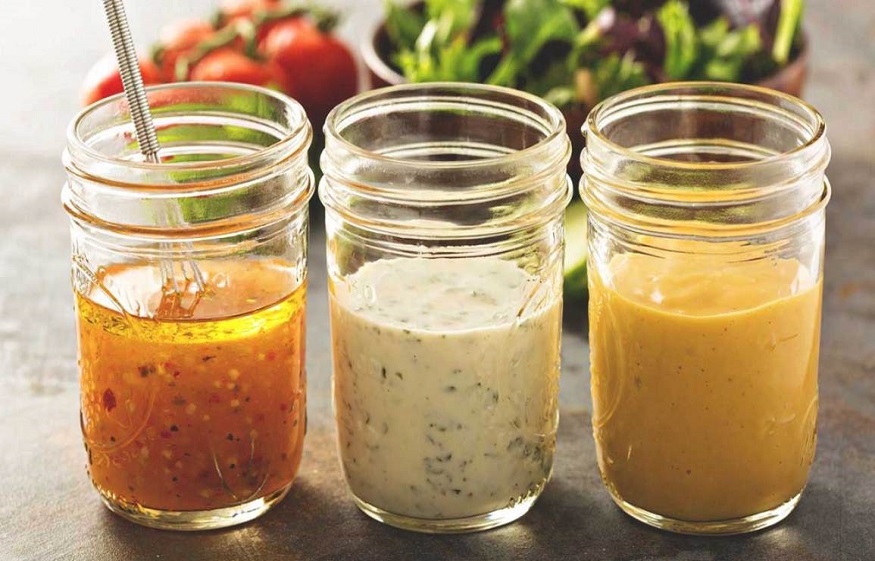Difference Between Rice Vinegar and Rice Wine

In Asian cuisine, rice wine and rice vinegar are common ingredients.
They have several variations, including their common titles. Yet, you might also wonder if you should use one instead of the other.
The differences between rice wine and rice vinegar, their uses, whether they can be used interchangeably are explained in this article.
Rice wine vs rice vinegar
Rice wine and rice vinegar are distinct, although both are made from fermented rice.
Production processes
A common alcoholic beverage used for both drinking and cooking is rice wine. It’s known as sake in Japan and the national beverage of the region. Other variants used for cooking include Japanese mirin and Chinese huangjiu.
The wine is made using yeast, fungi, and lactic acid bacteria to produce alcohol by fermenting rice starches. For example, the mould known as Aspergillus oryzae turns starches into sugars, and alcohol is created by a yeast called Saccharomyces cerevisiae.
Using an acetic acid bacteria known as Mother of Vinegar (Mycoderma acetic) and small quantities of rice wine to turn sugars into alcohol and then into acetic acid, rice vinegar is produced by fermenting the starches in rice.
Rice vinegar is often referred to as “rice wine vinegar,” contributing to the mystery. Much like red and white wine vinegar, despite having “wine” in its name, it is not an alcoholic beverage, and it is not rice wine either.
Flavour
The most popular rice wine varieties are Huangjiu (Chinese rice wine), mirin (Japanese cooking wine) and sake (Japanese drinking wine). They have a soft, moderate taste compared with other rice wines and are typically lower in alcohol content.
There are also other types of rice wine on the market, some with distinct flavours and colours based on the fermentation process and other additives such as spices, herbs, or fruits are added you can find at your local alcohol supplier in Singapore.
The sweet, acidic flavour of rice vinegar is close to other forms of vinegar, such as apple cider vinegar. Rice vinegar is typically only used in limited amounts, unlike rice wine.
It is not recommended to substitute one for the other because of their essential taste variations.
Nutrition
There is no nutrition involved in both rice wine and vinegar. It’s hard to compare their nutrient profiles, given their multiple applications.
Two hundred one calories, 7.5 grams of carbohydrates, and 0 grams of sugar and salt are given by one average 5-ounce (147-mL) serving of wine.
Meanwhile, 30 calories, 8 grams of carbs, 8 grams of sugar, and 710 mg of salt make up one tablespoon (15 mL) of prepared rice vinegar. Seasoned rice vinegar has sugar and salt added, but if you’re looking to limit these ingredients’ intake, go for an unseasoned form.
On the other side, there are zero calories, carbohydrates, or sugar in the unsweetened rice vinegar.
Uses
For cooking, rice wine is both used and widely drunk as an alcoholic beverage. In cooking, it is typically added as a taste enhancer directly to dishes or in marinades or sauces such as teriyaki.
Many Asian countries have a wide range of their own. The famous Cambodian rice wine liqueur Sombai, for instance, includes fruits, spices, and cane sugar. Meanwhile, dansul, also known as gamju, is popular in South Korea as a milky rice wine.
The Chinese, Japanese, and Korean varieties are most famous for their mild taste and pale-yellow colour when it comes to rice vinegar. Dark vinegar such as Kurozu is loved as well. The vinegar is used in marinades, sauces, fried rice, pickled vegetables, and sushi to add flavour.
“In fact, because of the dish’s traditional preparation, which involved preserving fish between fermented rice and salt, sushi translates to “sour rice” or “sour-tasting. Instead, rice vinegar was ultimately used to speed up the fermentation process and enhance the flavour.






